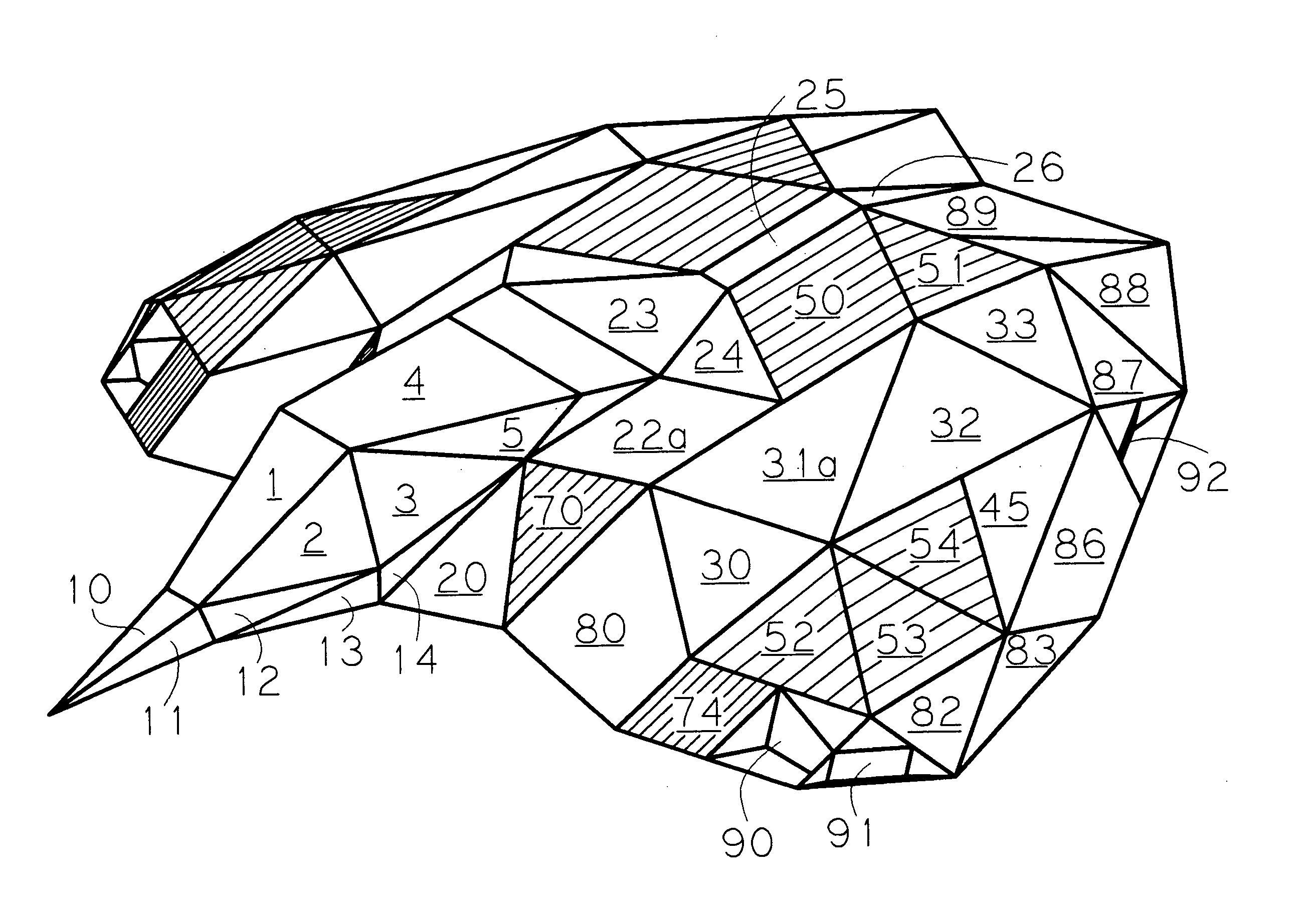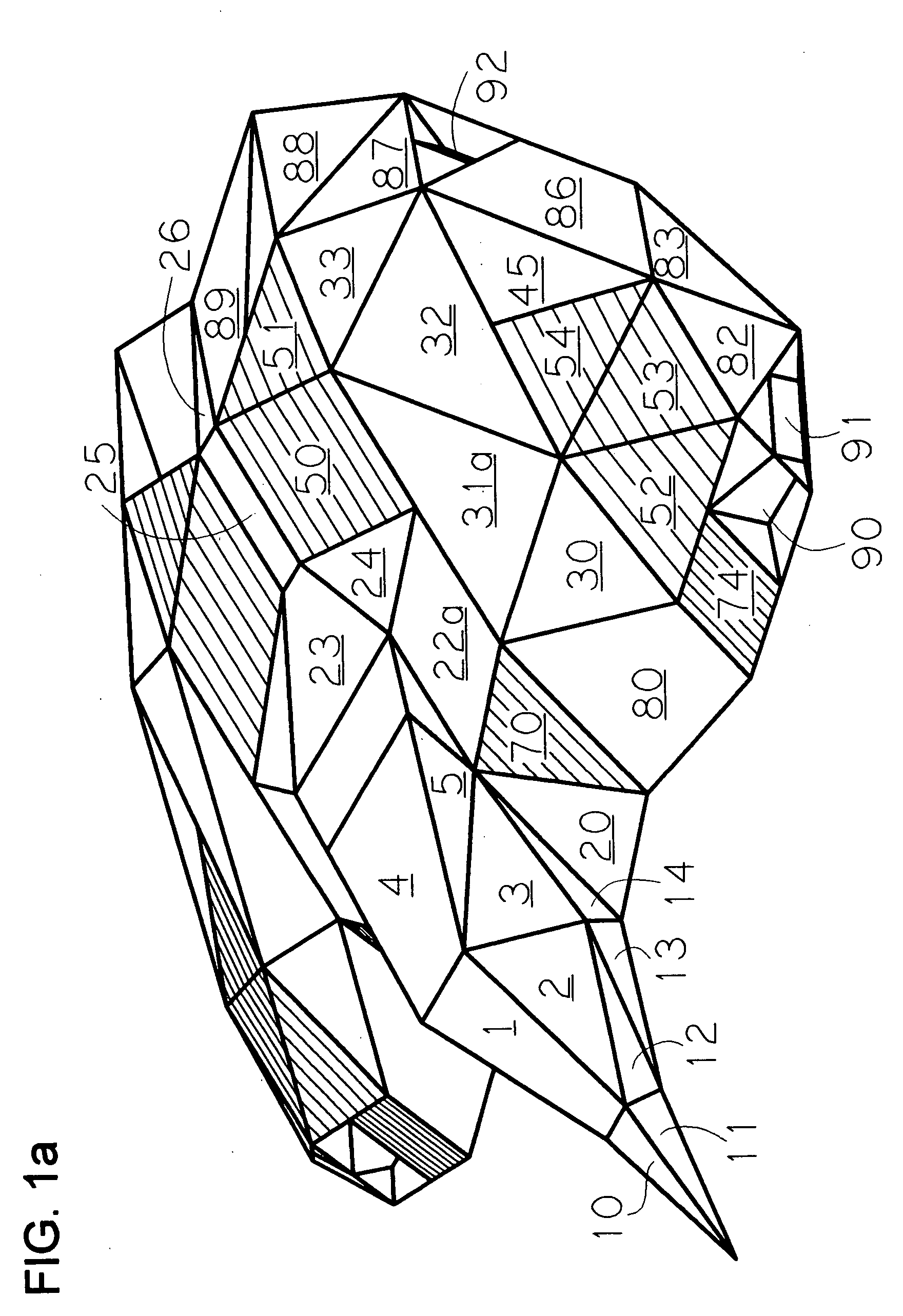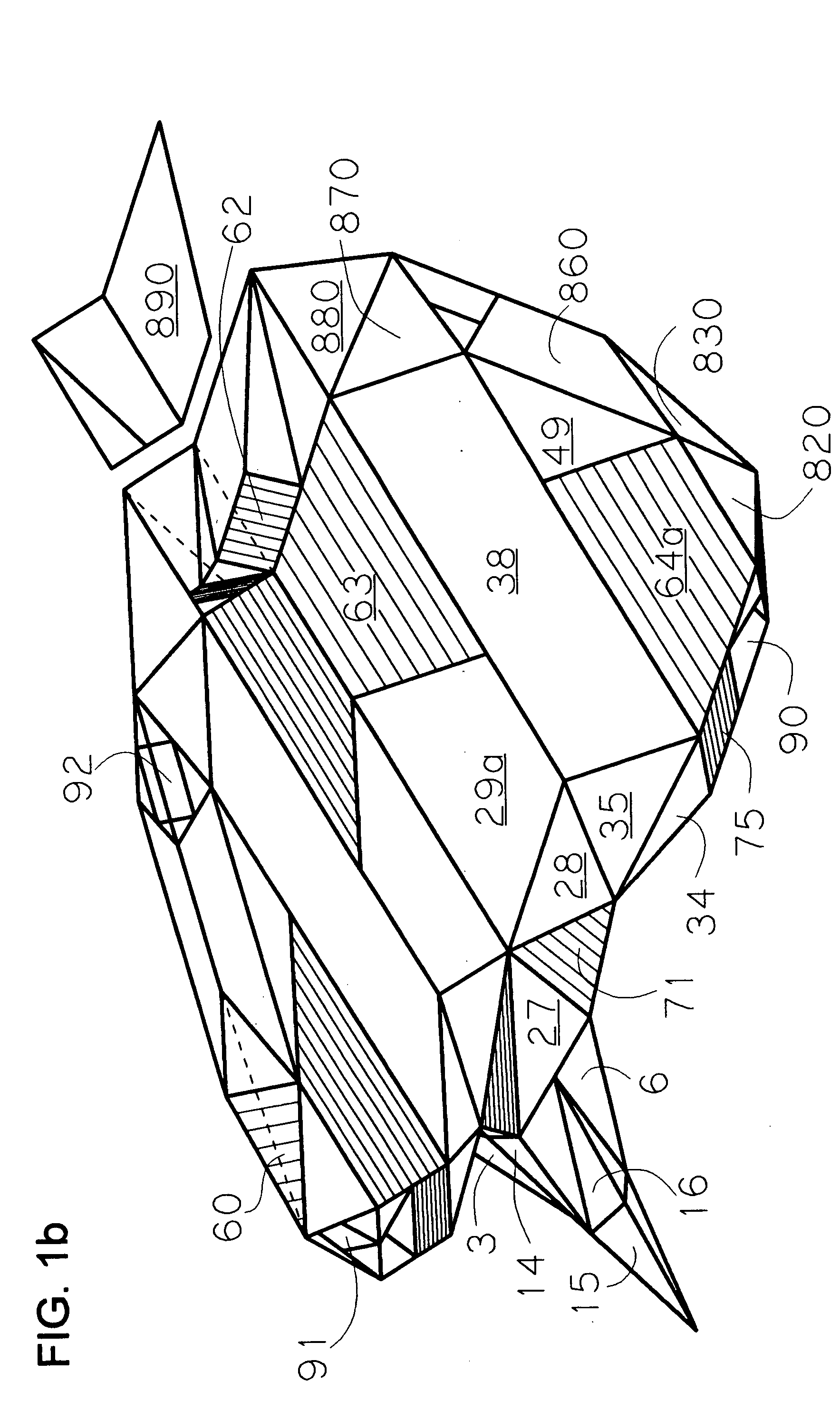Method of propulsion and attitude control in fluid environments and vehicles utilizing said method
a technology of fluid environment and propulsion method, applied in the direction of underwater equipment, special-purpose vessels, vessel construction, etc., can solve the problems of reducing efficiency, reducing the efficiency reducing the efficiency of the method of propulsion and attitude control, so as to achieve the effect of increasing the overall performan
- Summary
- Abstract
- Description
- Claims
- Application Information
AI Technical Summary
Benefits of technology
Problems solved by technology
Method used
Image
Examples
Embodiment Construction
[0057] As many components, structures and surfaces are identical in construction and function, for left and right sides of the vehicle, to reduce repetition and aid clarity to the drawings, components, structures and surfaces of only one side of the craft are labeled. Left and right side components, structures and surfaces shall be designated in the description, when necessary, with a suffix “-l,” designating left, or “-r,” designating right. For example 31a-l, shall designate the wing assembly surface / structure, 31a, on the left-hand side of the craft. The exception to this rule concerns only components, structures and surface which are centrally located on the fuselage, this exception includes: 1,4,10, 21a, 21b, 23, 25, 26, 27, 100, 104, 105, 106 and 190.
[0058] As many components, structures, and surfaces of two-cell, three-cell and four-cell vehicles which utilize the invention are nearly identical in construction and function, to reduce repetition, said components, structures a...
PUM
 Login to View More
Login to View More Abstract
Description
Claims
Application Information
 Login to View More
Login to View More - R&D
- Intellectual Property
- Life Sciences
- Materials
- Tech Scout
- Unparalleled Data Quality
- Higher Quality Content
- 60% Fewer Hallucinations
Browse by: Latest US Patents, China's latest patents, Technical Efficacy Thesaurus, Application Domain, Technology Topic, Popular Technical Reports.
© 2025 PatSnap. All rights reserved.Legal|Privacy policy|Modern Slavery Act Transparency Statement|Sitemap|About US| Contact US: help@patsnap.com



